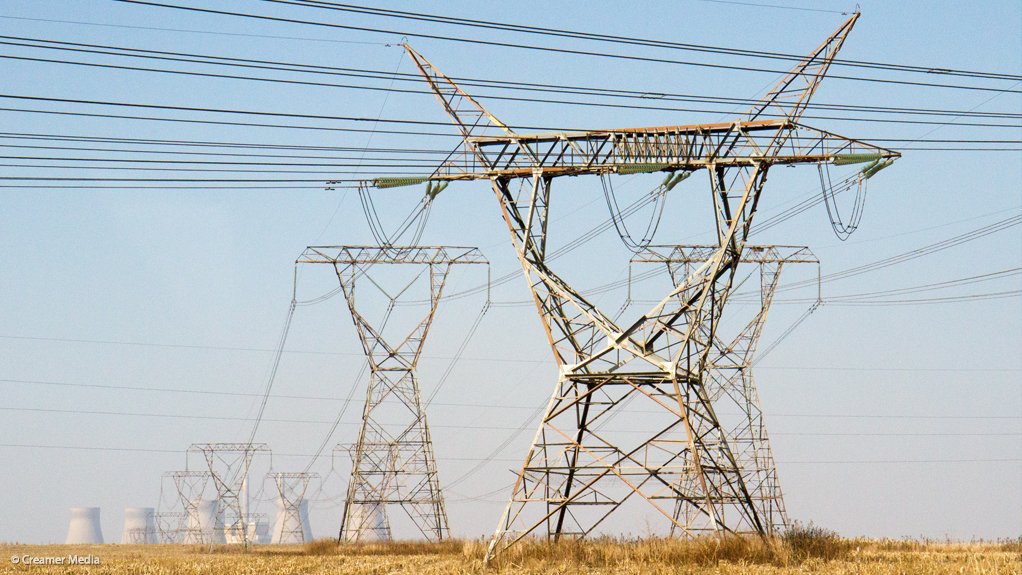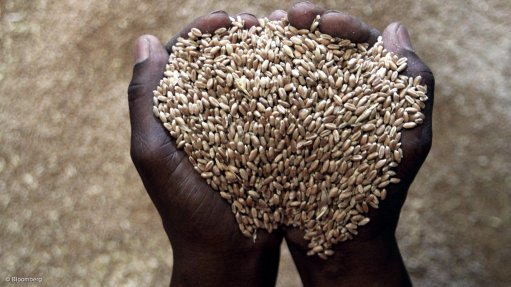Load-shedding spectre returns as unplanned outages rise
The spectre of load-shedding, which has haunted South Africa and its economy since 2008, but has lifted somewhat in recent years, appears to have returned.
State-owned electricity producer Eskom confirmed with Engineering News Online on Thursday that the system had become vulnerable once again, owing primarily to a rise in unplanned outages. The breakdowns are coinciding with an increase in scheduled maintenance, which is always planned for the low-demand summer months.
However, the risk of rotational cuts is being amplified by the fact that coal stockpiles have slumped to critical levels at some power stations. Coal stocks have fallen below the mandatory 20-day level at ten of Eskom’s 15 power stations and below ten days at five of these stations.
Spokesperson Khulu Phasiwe tells Engineering News Online that the system came under severe pressure during the October 31 evening peak.
Rotational cuts were avoided only after all of Eskom’s expensive diesel-fuelled open-cycle gas turbines (OCGTs) were deployed, along with those OCGT generators operated by independent power producers.
Demand peaked at 30 436 MW on October 31, which is well below the South African system’s theoretical capacity of more than 40 000 MW. However, close to 10 000 MW was unavailable as a result of unplanned breakdowns, while nearly 6 000 MW was offline for scheduled maintenance.
University of Cape Town professor emeritus Anton Eberhard warned on Twitter that South Africa had come close to rolling blackouts and called for policy and regulatory reforms to help reduce the risk posed by Eskom’s poor operational and financial performance.
“South Africa needs more competition. Policy and regulatory reforms should facilitate multiple willing buyer, willing seller deals. An independent grid would help,” Eberhard wrote.
Energy Intensive Users Group chairperson Dr Tsakani Mthombeni also highlighted the deteriorating performance of Eskom's plants in an article written to oppose the utility's proposed electricity tariff increases.
Mthombeni said the poor performance was negating the full benefit of new plant coming online and a failure to improve the situation would come at a significant cost, including the costs of running expensive gas. "A further concern relates to the impact of Eskom’s poor plant performance on future regulatory clearing account applications, as gas and diesel power plants are currently being utilised."
Phasiwe attributed many of the unplanned outages to trips that occurred soon after units had been returned to service following repair work. Instructions had subsequently been sent to power station managers to pay particular attention to the quality of such repairs so as to prevent such “slippages”.
The immediate prognosis was for greater stability over the November 1 evening peak, with more units expected to become available during the course of the day.
Phasiwe also stressed that Eskom still had other buffers, including interruptible contracts and pumped-storage capacity, to help it avoid load-shedding. The utility also had sufficient diesel stocks should it become necessary to operate the OCGT plants.
However, the prognosis for the rest of summer remained one of constraint, particularly given that planned maintenance was scheduled to rise further and given the risk posed by wet coal, especially at those power stations with low stocks.
The long-term weather forecasts are pointing to heavy rains for the Mpumalanga region between January and March next year.
The issues of coal supply and wet coal have also been highlighted as a risk in Eskom’s recently released Medium-Term System Adequacy Outlook for the period 2018 to 2023.
The report flags insufficient coal at the power stations as a key risk and adds that this risk “could be exacerbated by unavailability of suitable coal and/or excessive rain in the Mpumalanga area”.
The report also indicates that additional generation capacity will be required to restore system adequacy between 2018 and 2023 should the energy availability factor from the coal fleet fall below 75%.
Comments
Press Office
Announcements
What's On
Subscribe to improve your user experience...
Option 1 (equivalent of R125 a month):
Receive a weekly copy of Creamer Media's Engineering News & Mining Weekly magazine
(print copy for those in South Africa and e-magazine for those outside of South Africa)
Receive daily email newsletters
Access to full search results
Access archive of magazine back copies
Access to Projects in Progress
Access to ONE Research Report of your choice in PDF format
Option 2 (equivalent of R375 a month):
All benefits from Option 1
PLUS
Access to Creamer Media's Research Channel Africa for ALL Research Reports, in PDF format, on various industrial and mining sectors
including Electricity; Water; Energy Transition; Hydrogen; Roads, Rail and Ports; Coal; Gold; Platinum; Battery Metals; etc.
Already a subscriber?
Forgotten your password?
Receive weekly copy of Creamer Media's Engineering News & Mining Weekly magazine (print copy for those in South Africa and e-magazine for those outside of South Africa)
➕
Recieve daily email newsletters
➕
Access to full search results
➕
Access archive of magazine back copies
➕
Access to Projects in Progress
➕
Access to ONE Research Report of your choice in PDF format
RESEARCH CHANNEL AFRICA
R4500 (equivalent of R375 a month)
SUBSCRIBEAll benefits from Option 1
➕
Access to Creamer Media's Research Channel Africa for ALL Research Reports on various industrial and mining sectors, in PDF format, including on:
Electricity
➕
Water
➕
Energy Transition
➕
Hydrogen
➕
Roads, Rail and Ports
➕
Coal
➕
Gold
➕
Platinum
➕
Battery Metals
➕
etc.
Receive all benefits from Option 1 or Option 2 delivered to numerous people at your company
➕
Multiple User names and Passwords for simultaneous log-ins
➕
Intranet integration access to all in your organisation




















